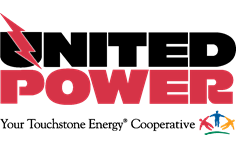Earlier this month, United Power went live with its much anticipated battery storage facility at its new west office, located on the I-25 Frontage Road south of state Highway 119. The project, developed in collaboration with ENGIE, is the largest utility battery storage facility in Colorado.
The introduction of battery storage to United Power’s portfolio will allow the cooperative to save an expected $1 million each year in wholesale capacity charges. Energy generated from all sources on United Power’s grid will be stored during low-demand hours to be discharged during high-peak periods throughout the year.
United Power’s primary goal for its battery storage facility is peak shaving, but it also better positions the cooperative to respond to future innovation and development within the energy environment.
“Understanding storage is the next logical step in the progression of renewable generation,” said Jerry Marizza, United Power’s New Business Director. “Without the ability to store energy, renewables will have an artificial cap placed on its utilization.”
On bright days when the sun is shining, solar fields may collect more energy than can be immediately used. Without proper storage capabilities, that excess energy is lost. Allowing the capture of both wind and solar energy produced at off-peak times when demand is low conserves energy and saves money.
“As a co-op, we have an obligation to our communities and individual members to explore these new options to meet this ever changing energy environment,” Marizza said.
The Tesla battery system United Power and ENGIE utilized for this project is a larger version of the lithium ion battery found in Tesla’s popular electric vehicles. Through years of testing and refinement, Tesla batteries have become the industry standard in energy storage.
The system has the capacity to store and distribute up to four megawatts of energy, or enough to power up to 700 homes simultaneously. Size and duration of the batteries used was determined during a study of United Power’s monthly load profile.
“As one of the fastest growing co-ops in Colorado, United Power wants to stay ahead of the curve when it comes to integrating new technology that can help boost reliability and keep costs down,” said John Parker, United Power CEO, during the project announcement this past year. “Energy storage will play an important role in the grid of the future, and we’re excited to be starting now.”
The new battery storage facility builds on United Power’s reputation for adopting and implementing innovative technology, such as the Sol Partners Cooperative Solar Farm – the first of its kind in Colorado – and Methane to Megawatts Project at the Erie Landfill – only the second of its kind in the state. More than just renewables, these projects also make economic sense for our members while providing reliable energy.

